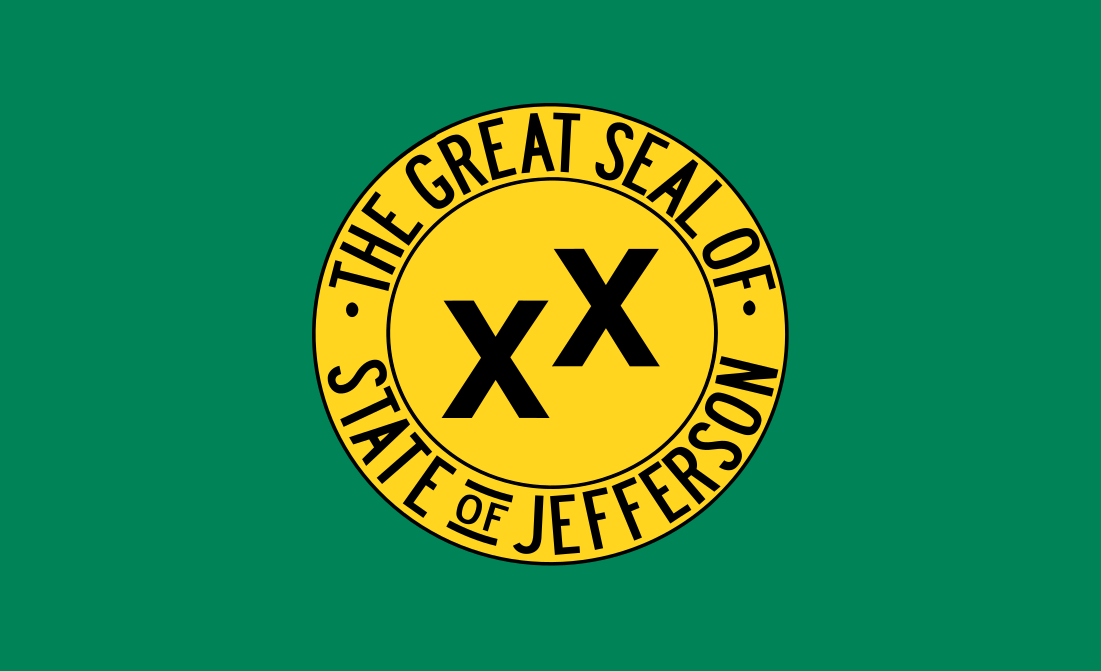The movement for a State of Jefferson remains a hot issue in the north state. Olivia Notter/CC BY 2.0
A separatist movement still smolders in California’s north state
California, a place of dizzying size and complexity, has often been impugned as ungovernable. It’s also been a rallying cry for hundreds of proposals to carve up the state since its formation in 1850.
Among the most enduring has been the State of Jefferson.
It was on this day in 1941 that a group of armed miners set up a road block along Route 99 in Siskiyou County and distributed proclamations of a new state carved from Oregon and California to be named after the author of the Declaration of Independence.

State of Jefferson rebels manned a roadblock in a staged photograph at Yreka in 1941.
They’d had enough of being overtaxed, the rebels said, and they lacked proper roads to transport their copper ore and timber. The Jefferson state seal featured a mining pan with two X’s, symbolizing their double-crossing by big-city politicians.
“If this was Los Angeles County,” one rebel told the journalist Stan Delaplane, “they’d have their roads in no time. They’ve got the votes but we’ve got the copper.”
But the uprising fizzled abruptly. Gilbert Gable — the mayor of Port Orford, Oregon, and a ringleader of the Jefferson movement — died on Dec. 2. Five days later, Pearl Harbor was attacked, and California turned its full attention to the war effort.

The State of Jefferson flag evokes the region’s sense of abandonment.
Seventy-seven years later, the Jefferson movement still smolders in California’s conservative north state, where green-and-gold Jefferson banners can be spotted in front yards and business windows of just about any community.
In 2013, the Siskiyou County Board of Supervisors voted 4-1 to secede from California.
More recently, Jefferson proponents have been energized by the rise of President Trump and the attendant tilt leftward in California politics. They’ve turned to pushing their separatist cause through the courts — with little success. Their grievances echo those of the miners in the 1940s: chiefly, a perceived lack of representation in Sacramento.
This article is from the California Sun, a newsletter that delivers must-read stories to your inbox each morning — for free. Sign up here.
Get your daily dose of the Golden State.